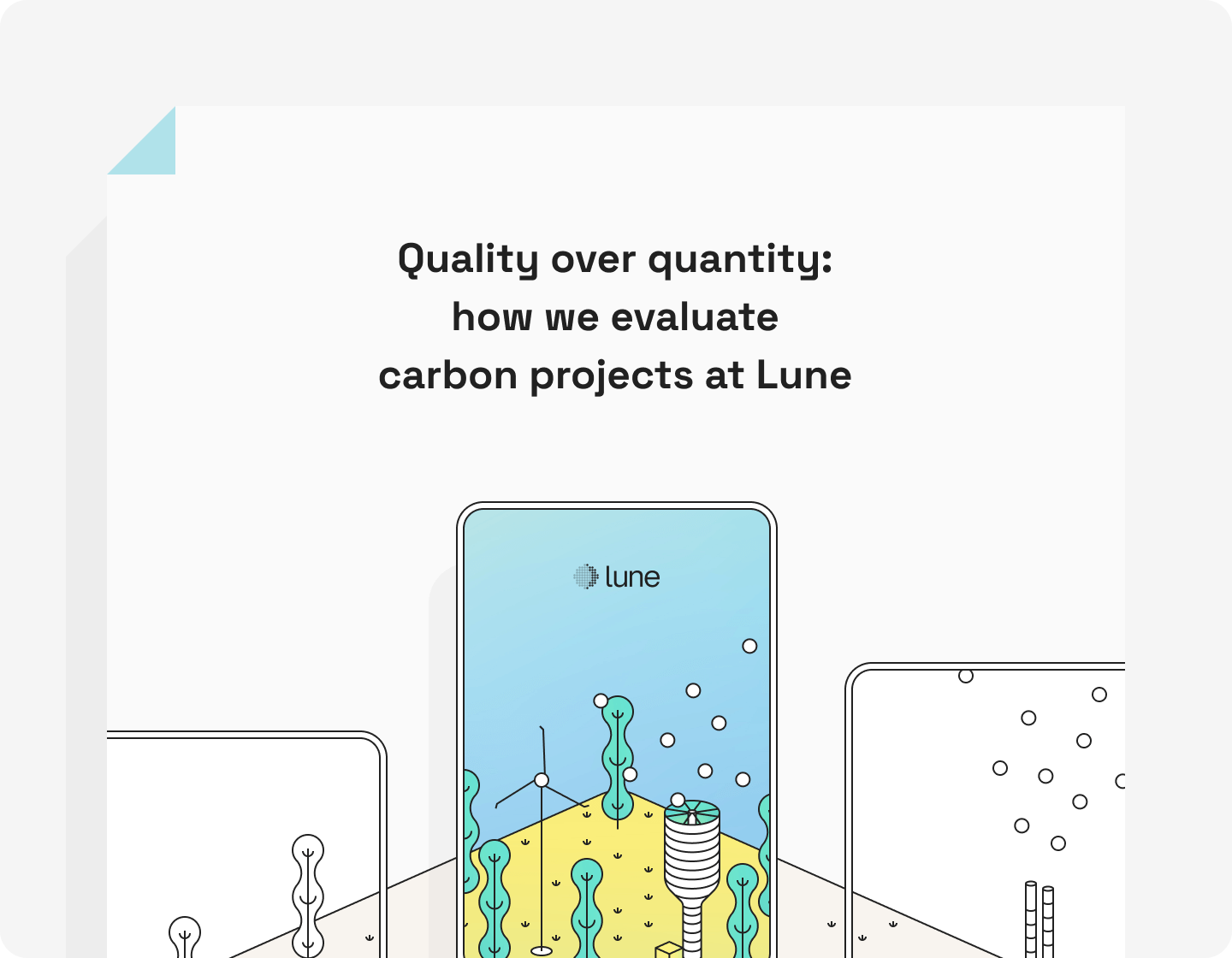

Between 20 to 26 gigatonnes of CO₂e. According to the UN, this is the projected gap in 2030 between where emissions are heading vs. where they need to be to limit warming to 1.5°C by the end of the century. It looks like a chasm. But promisingly, the news comes when corporate demand for setting climate targets is rocketing.
 1.5°C and 2°C by end of century.
1.5°C and 2°C by end of century.The demand isn’t just for setting any climate goal. It's a growing want to set credible, transparent, and evidence-based goals. Goals that most critically, have a real impact. Recently, the Science Based Targets Initiative (SBTi) predicted their uptake of companies wanting to verify their emission targets will surpass 10,000 by 2025.
These sustainability leaders want to take climate action, properly. However, there is a growing confusion amongst them about whether carbon project contributions are compatible with science-based targets.
The short answer is absolutely yes. But alarmingly, only 0.5% of companies with SBTi targets have purchased carbon removal.
What are science-based targets?
The SBTi developed its Corporate Net-Zero Standard as a framework for businesses to set net zero targets that are consistent with the latest climate science. Its Standard defines net zero companies as those that eliminate at least 90% of emissions created by their value chain by 2050.
To achieve this, the SBTi Standard has four key elements:
- Set near and long-term targets – this can mean making rapid emissions cuts now to halve emissions by 2030, while working towards reducing emissions by 80-90% by 2050.
- Focus on rapid, deep emission cuts across a company’s entire value chain.
- Go beyond the value chain – in parallel to emissions cuts, companies should each year contribute to climate change mitigation outside of their value chain, such as buying high-quality carbon credits.
- Once long-term reduction targets are met, neutralise remaining emissions with high-quality, permanent carbon removal, such as direct air capture & storage or enhanced rock weathering. No net-zero claims can be made until the long-term targets have been met and the residual neturalised.
Subscribe for the latest insights into driving climate positivity
Why can you use carbon removal to meet science-based targets?
The Standard outlines two use cases for carbon project contributions: to neutralise remaining emissions using permanent carbon removal and make an impact beyond their value chain.
But we cannot wait until 2050 to do this. We are in a climate emergency now. The reality is businesses are limited with how much decarbonisation they can do in a year. Leaders who recognise this will surpass the SBTi standards and begin counterbalancing their emissions and investing in future carbon removal projects today.

The case for deep and urgent decarbonisation is crystal clear, the gap is too big and time is too short. Companies should not be focusing on carbon reduction either/or carbon offsetting. Instead, they need to focus efforts on carbon reduction and carbon offsetting.
At scale. Without compromising quality.
There is no net zero in the future without scaling carbon removal today
To limit warming to 1.5°C, the IPCC estimates that we need approximately 10 billion tCO₂ removal per year by 2050. Currently, the total is only 50-100 million tCO₂ removal per year, including forest projects. If we only consider permanent carbon removal, the number is less than 100,000 tCO₂ per year.
We need to scale the market by 100-1,000 times. If we don’t start today, there will simply not be enough carbon removal available for any company to achieve their net zero targets in 2050.
It has to start now. Forward-thinking companies that are already purchasing carbon removal are feeling the supply constraints. They are often buying forward several years in advance to lock in the supply. That means that it's even more pressing for companies to start contributing to carbon projects today.
The irreversible costs of not making an impact today
Climate change is impacting our planet. Biodiversity has already declined by 94% in Latin America and the Caribbean. Last year, 18.4 million people living in the Horn of Africa were facing severe hunger due to climate-driven drought.
We can’t afford to wait until 2050 to “go beyond the value chain”. There will be no nature or communities left to conserve and protect. Carbon projects unlock capital flows to the planet's most vulnerable and exposed regions. When done correctly, they are the single best mechanism to protect nature and restore biodiversity.
What is a high-quality carbon offset?
Only high-quality removal projects will have the positive climate impact needed to avert the climate crisis. However, the SBTi has yet to provide a clear definition of what high-quality carbon projects are. But we are one step ahead.
Quality is always the primary factor in how we assess projects, ensuring they have durable, additional, and measurable impact. At Lune, we’ve curated a blend of traditional offsets, as well as carbon projects that help scale permanent carbon removal solutions required to meet net zero.

You can invest in carbon projects aligned with your business using Lune’s dashboard. By removing the barriers to investing in impactful carbon projects, you can focus your time on implementing rapid, deep emissions cuts.
With the SBTi as a guide, companies need to pull every lever possible to reach net zero, including investing in quality carbon projects. To find out more about how to assess the quality of carbon projects, download our quality assessment paper.

Readers also liked
Readers also liked

Subscribe for emissions intelligence insights
Get the latest updates in the world of carbon tracking, accounting, reporting, and offsetting direct to your inbox.


